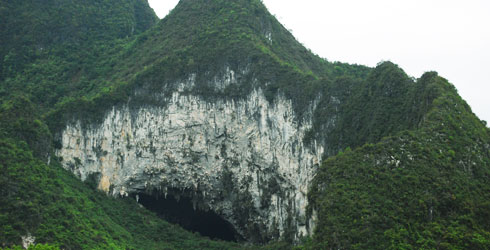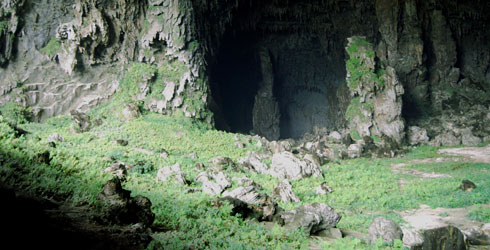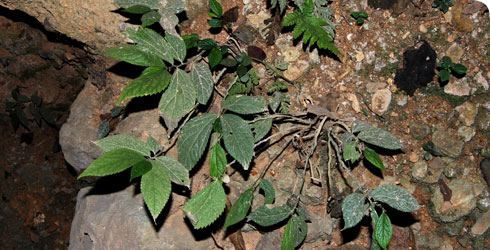Elatostema fengshanense
Elatostema fengshanense was discovered in 2008 in Fengshan cave in Guangxi, south west China. This species is a member of a fascinating group of unusual and poorly-studied plants in the nettle family.
The genus Elatostema is characterised by very strange flower clusters consisting of hundreds of flowers whose stalks are fused together in what resembles an inside-out fig. Many of the species in the genus remain undescribed, and although 350 species are currently known, there are probably 1,000 species worldwide.
These species are found growing in forests, gorges and caves in Australasia, South East Asia, Asia and Africa and are very vulnerable to deforestation. In many parts of China, they are consumed as a green leaf vegetable and also used as pig feed.
Ongoing collaborative research between the Natural History Museum and the Chinese Academy of Sciences Institute of Gunagxi seeks to understand why these species grow in caves.
Species detail
-

Taxonomy
Elatostema closely resembles a number of nettle family genera. Discover how molecular DNA studies are helping to define the evolutionary relationships between them.
-

Distribution and habitat
Elatostema fengshanense is only found in deep shade inside a handful of caves in south west China. Scientists are exploring caves across southern China in order to understand this unusual distribution.
-

Biology
The female flowers of this species barely resemble flowers at all. Find out what they look like and what we know about this plant’s dispersal.
-

Conservation
The caves of south west China are home to many plant species found nowhere else in the world.
Images






About the author
Dr Alex Monro
Researcher, Department of Botany.
A word from the author
"I first started working with this group of plants in 2007 and became fascinated by the cave-dwelling species - in part because they pose a number of interesting scientific questions, but also because of the magical and unexpected landscapes found inside the caves."
Local common names for Elatostema fengshanense include:
- Lou ti cao, meaning stair herbs
- Shi Yan Cai, meaning rock vegetable
